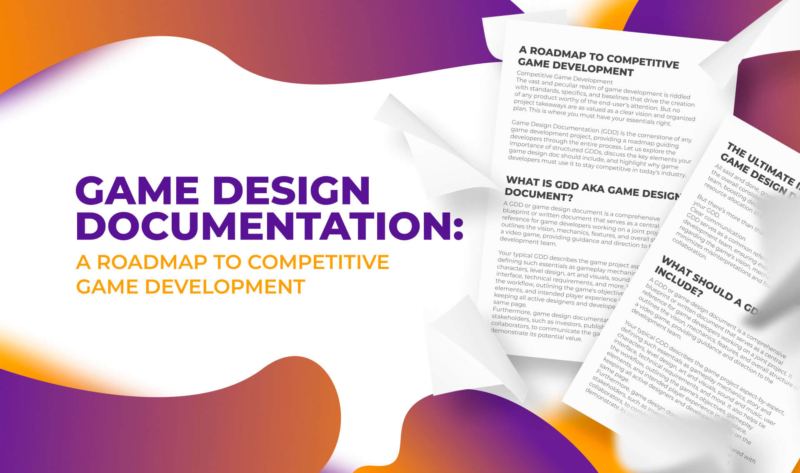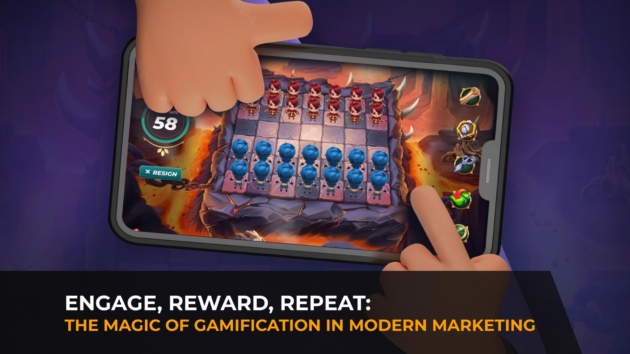The vast and peculiar realm of game development is riddled with standards, specifics, and baselines that drive the creation of any product worthy of the end-user’s attention. But no project takeaways are as valued as a clear vision and organized plan. This is where you must have your essentials right.
Game Design Documentation (GDD) is the cornerstone of any game development project, providing a roadmap guiding developers through the entire process. Let us explore the importance of structured GDDs, discuss the key elements your game design doc should include, and highlight why game developers must use it to stay competitive in today’s industry.
What is GDD aka Game Design Document?
A new game development project is a creative journey if anything else. A journey that a team of specialists must navigate, and the smoother the road is, the better result you’ll get.
A GDD or game design document is a comprehensive blueprint or written document that serves as a central reference for game developers working on a joint project. It outlines the vision, mechanics, features, and overall structure of a video game, providing guidance and direction to the development team.
Your typical GDD describes the game project aspect-by-aspect, defining such essentials as gameplay mechanics, story and characters, level design, art and visuals, sound and music, user interface, technical requirements, and more. It also helps tie the workflow, outlining the game’s objectives, gameplay elements, and intended player experience in one place, keeping all active designers and developers literally on the same page.
Furthermore, game design documentation can be shared with stakeholders, such as investors, publishers, or potential collaborators, to communicate the game’s concept and demonstrate its potential value.
The Ultimate Importance of Game Design Documentation
All said and done, good game documentation helps maintain the overall consistency and coherence within the development team, boosting decision-making, problem-solving, and resource allocation in the long run.
But there’s more than that speaking in favor of focusing on your GDD.
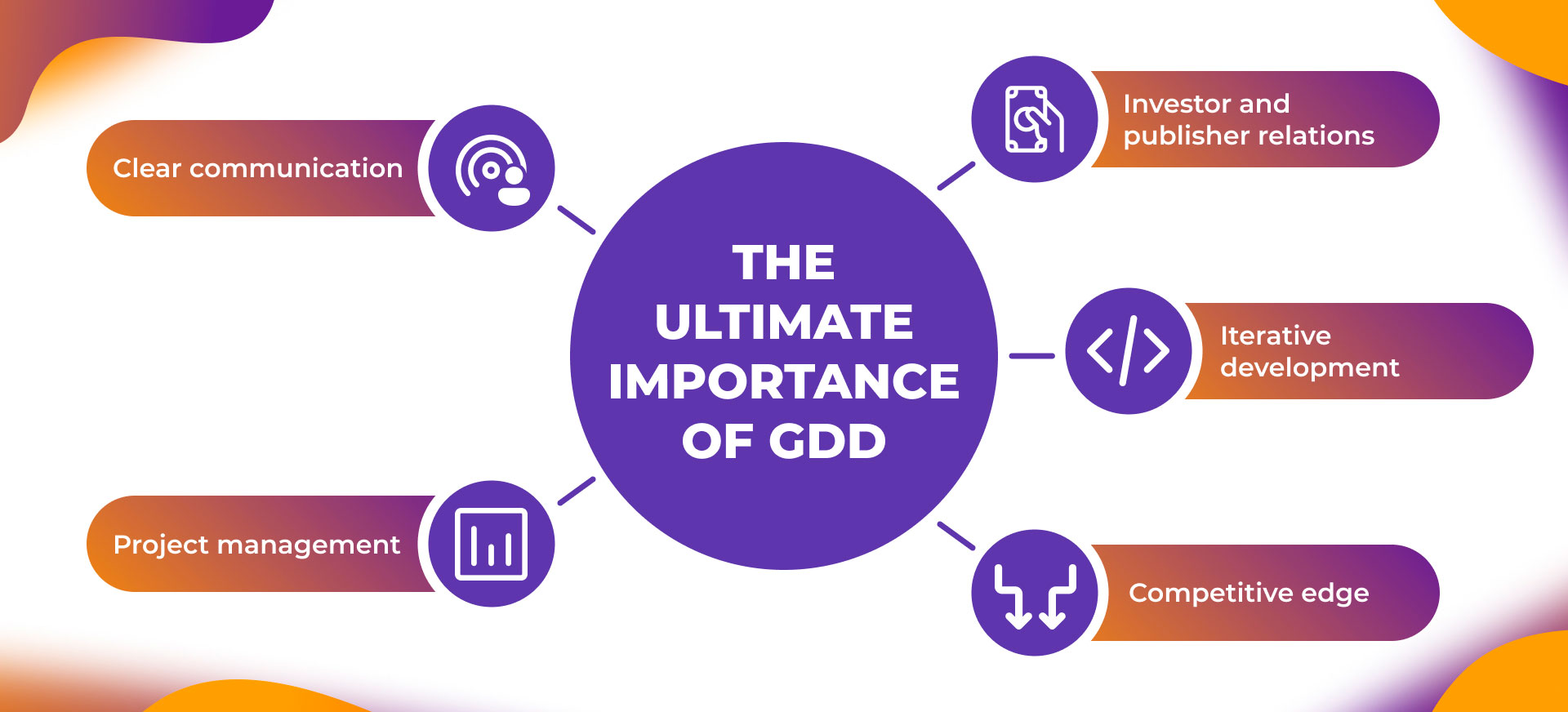
Clear communication
GDD serves as a common reference point for the entire development team, ensuring everyone is on the same page regarding the game’s vision, mechanics, and overall direction. It minimizes misinterpretations and fosters effective collaboration.
Project management
A well-structured GDD acts as a project management tool, helping developers track progress, set milestones, and manage resources efficiently. It serves as a central document that guides decision-making and prioritization throughout the development lifecycle.
Investor and publisher relations
Game design documentation plays a crucial role when seeking funding or partnering with publishers. A comprehensive GDD demonstrates professionalism and a clear vision, growing your chances of securing financial support or collaboration opportunities.
Iterative development
Providing game development services is an iterative process, and GDD facilitates it by providing a foundation to review and refine design decisions. It allows developers to identify and address potential issues early on, saving time and resources in the long run.
Competitive edge
In today’s highly competitive game industry, having a clear GDD can give developers a significant advantage. It showcases professionalism, strategic planning, and attention to detail, which further attracts investors, publishers, and players alike.
What Should a GDD Include?
Every project is unique, but there are common basics that you certainly should put into the core of your GDD. How to make a game design document that hits the spot? Make sure to include the following points.
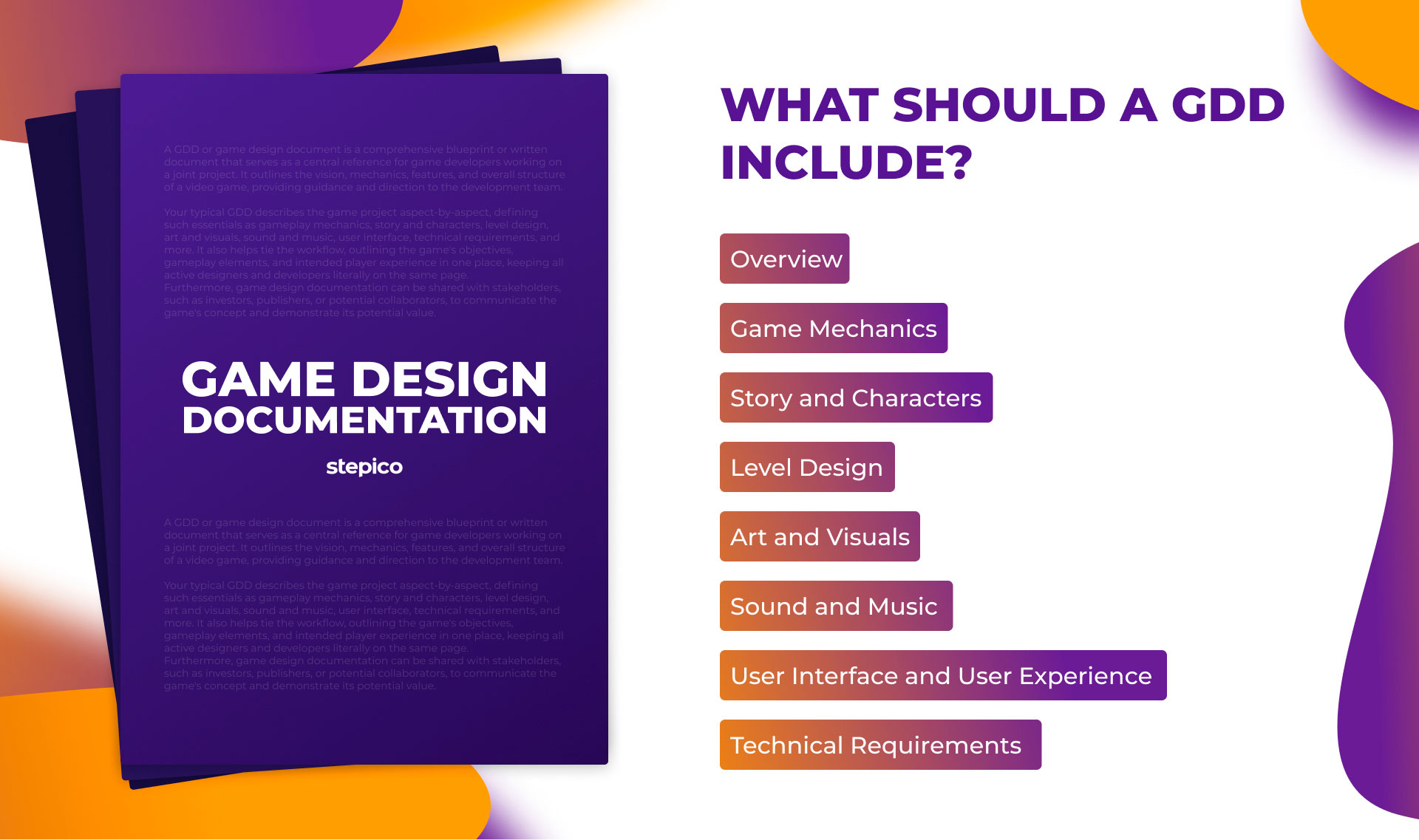
Structure of a proper game design document:
- Overview: The GDD should begin with an overview that outlines the core concept of the game, its genre, target audience, and the unique selling points that make it stand out from other games in the market.
- Game Mechanics: Detail the fundamental gameplay mechanics, controls, and interactions that players will experience. Explain how these mechanics contribute to the overall game experience and support the game’s objectives.
- Story and Characters: If the game has a narrative component, provide a comprehensive overview of the story, including plot points, character descriptions, and driving motivations. This section helps to establish an engaging and immersive world for future players.
- Level Design: Discuss the structure and layout of the game’s levels or environments. Include sketches, diagrams, or concept art to help visualize the intended design. Highlight key features, challenges, and objectives players will encounter in each level.
- Art and Visuals: Describe the visual style, art direction, and graphical assets that will be used in the game. This section should cover character designs, environments, user interface elements, and any special effects that contribute to the game’s aesthetics.
- Sound and Music: Explain the audio elements, including the sound effects and music that will enhance the player’s experience. Mention any licensed music or voice-over work that may be included.
- User Interface and User Experience: Detail the user interface (UI) design, including menus, HUD elements, and controls. Consider usability, accessibility, and intuitive design principles to ensure a smooth and enjoyable user experience.
- Technical Requirements: Provide technical specifications and requirements, such as supported platforms (PC, console, mobile), required hardware, networking features, and any specific software frameworks or engines being used.
Use this as your summarized cheat sheet for structuring a clear and to-the-point game design doc, and you’re good to go. It may come out in different sizes depending on how much content you have to highlight, but it is always best to keep things concise and striking.
The rest of the deal is about making your GDD truly shine. Namely, you can follow some of these pro tips on how to make a game design document all-around efficient.
GDD composition hot tips
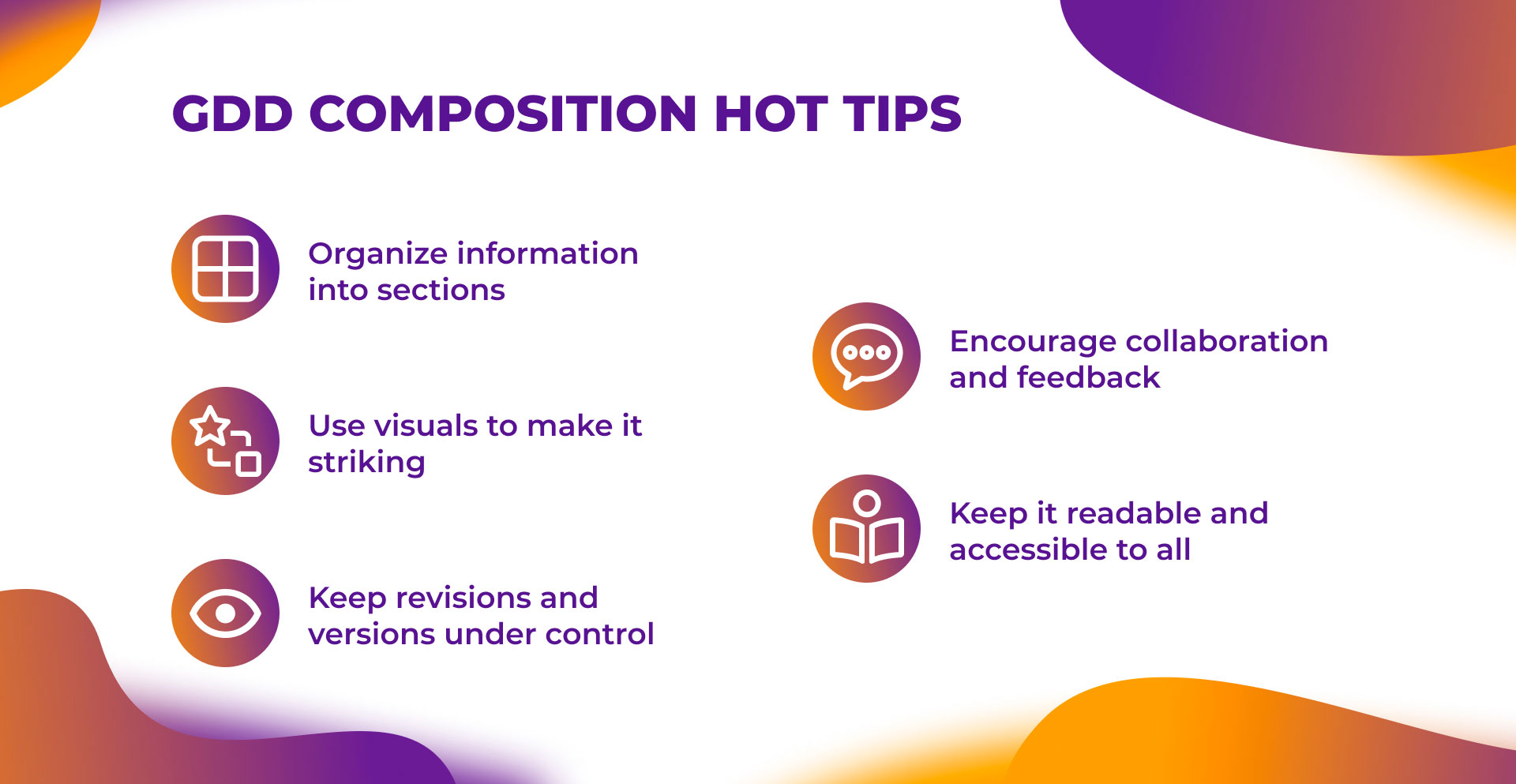
- Organize information into sections
Always keep your GDD segmented and logically divided into sections. Provide the table of content at the beginning. This organization helps both you and the development team easily navigate and reference specific points during the development process.
- Use visuals to make it striking
Concept art, sketches, diagrams, and flowcharts are all must-have goodies that help vividly deliver your ideas. Visuals can effectively convey the intended look and feel of the game, level layouts, character designs, and UI elements – you name it.
- Keep revisions and versions under control
Not a lot of agencies will give you this advice, but you should consider implementing a version control system to manage revisions and updates to your game design document. As the development progresses, ideas may evolve, and a version control system helps track and manage any updates through the history of changes and iterations.
- Encourage collaboration and feedback
Game development is a collaborative process, and your GDD should reflect that. Encourage the team members to provide feedback, suggestions, and ask questions regarding the design document. Foster an open and collaborative environment where everyone’s input is valued.
- Keep it readable and accessible to all
Make sure your game documentation is easy to read and accessible to all team members. Use consistent formatting, headings, and subheadings to improve readability. If your GDD is too lengthy, consider creating a summarized version or supplementing it with additional documents, such as design briefs or concept documents, for specific focus areas.
How Much Does a GDD Cost?
The cost of a game design document is typically evaluated based on various factors, including the complexity and scope of the game project, the level of detail required in the document, and the expertise and experience of the professionals involved.
The evaluation may also consider the time and effort required to gather and document all the necessary information, conduct research, iterate on the design, and ensure that the document effectively communicates the vision and requirements of the game. The assessment can involve discussions with the client or stakeholders to determine the specific needs and expectations for the GDD, which can then influence the overall cost.
Wondering how to make a game design document that works? Contact us for professional consultation and assistance based on years of firsthand experience working on video game projects of all scopes.
Conclusion
Game design documentation is the backbone of your future video game opus. It is the light in the darkness. It is the essence and guidance, helping designers and developers stay focused, organized, and eager to fulfill new creative concepts.
It is, honestly, difficult to add anything else on top of these defining reasons why you need to double down on your GDD. Calculating the cost of a game design document is a daunting task, but hiring a professional game development company will free you from this burden altogether.
